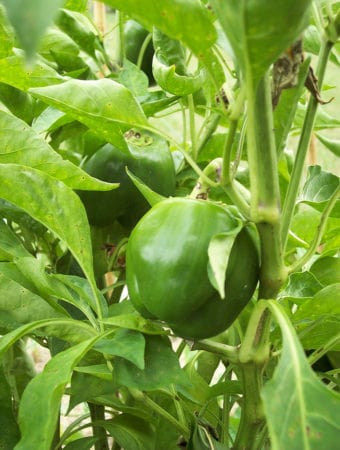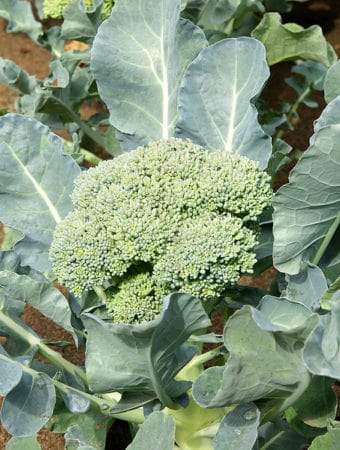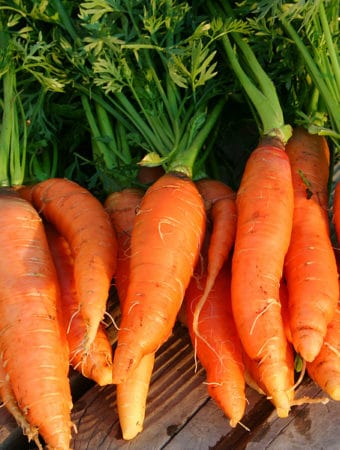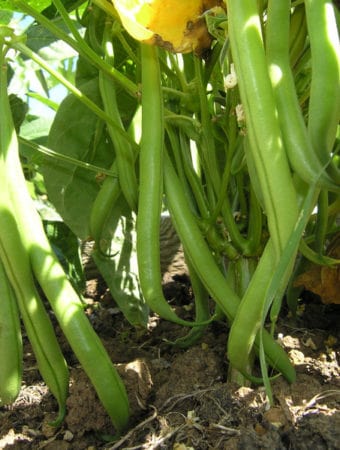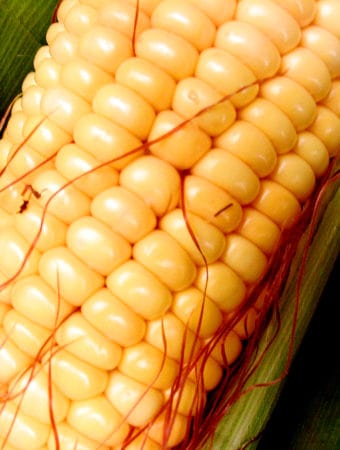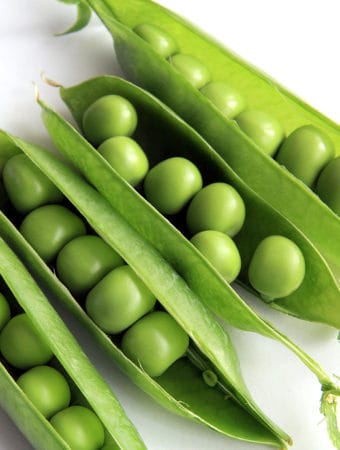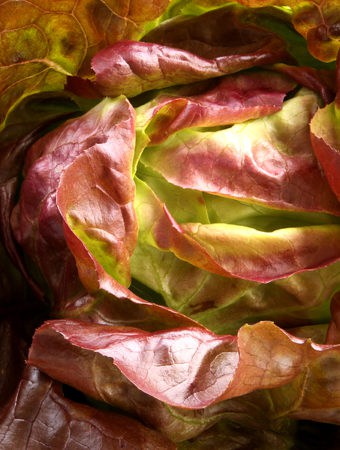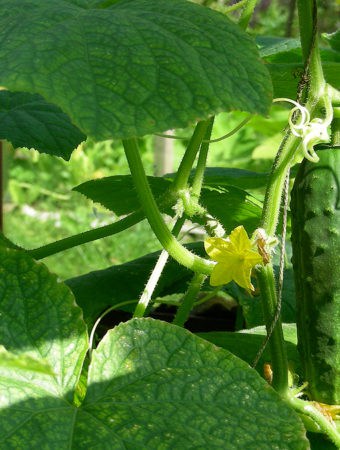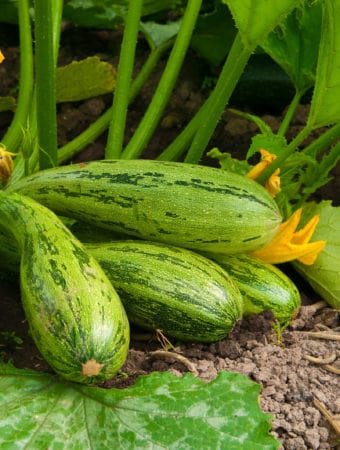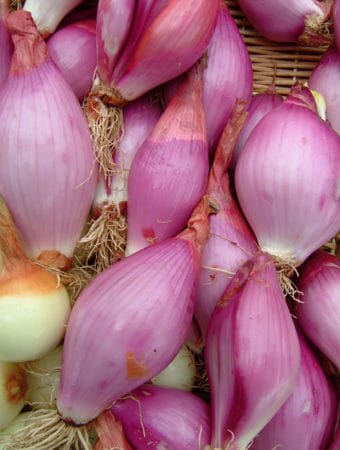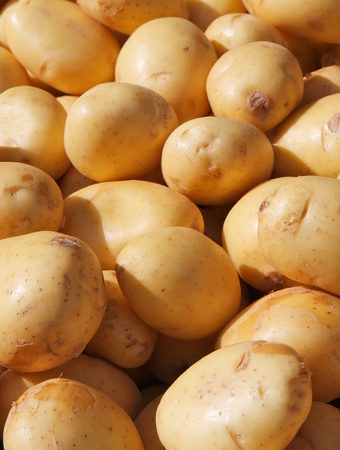Winter squashes are the most plentiful from early autumn until late winter.
Unlike the summer squashes, the winter squashes must be cooked before they are eaten. Add winter squash to soups, stews, couscous, and curries. Use winter squash to make pies, cakes, muffins, cookies, pudding, soufflés, and cream desserts.
Choose a winter squash—such as the Hubbard, butternut, acorn, or buttercup—that is hard-shelled and heavy for its size. That means the squash will be mature and the flesh is ready for eating.
To serve four, you will need to select a squash that weighs at least 2 to 3 pounds.
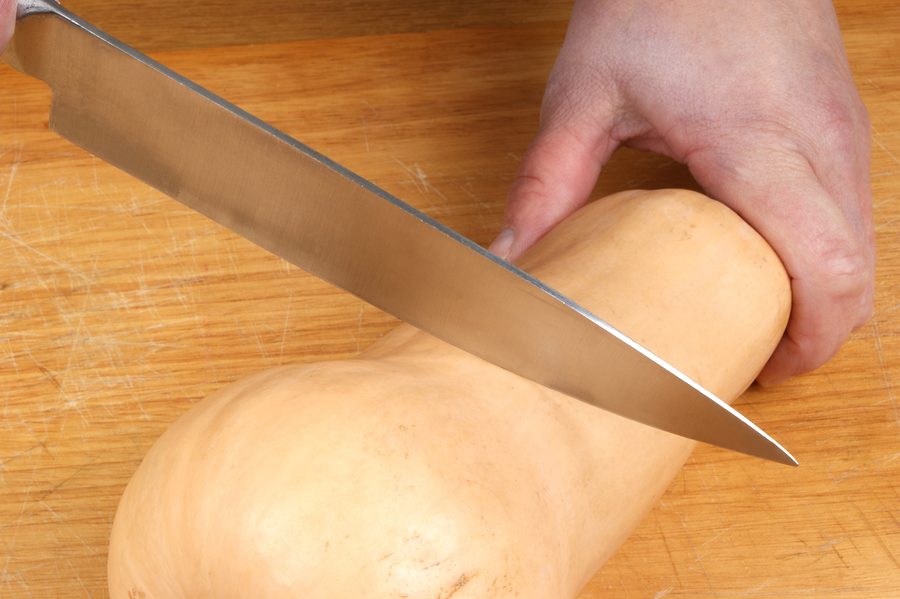
Winter squashes have tough, hard skins that are never eaten. It is best to cook a winter squash in its skin.
Acorn, butternut, Kabocha, and pumpkin should be cut in half lengthwise before cooking. Banana and Hubbard squash should be cut into serving-size pieces. Use a heavy-bladed knife. Remove the seeds and stringy insides and you will be ready to cook. You can peel the skin away after cooking.
Winter squash varieties for cooking
Acorn is somewhat oval and acorn-shaped with ribbed, dark green skin, and orange flesh. The flesh is tender and fine-textured with a flavor that hints of hazelnuts and pepper. To prepare, remove the seeds and bake. You can eat this one directly from the shell. This variety keeps for 30 to 50 days.
Buttercup is a variety of turban winter squash. It ranges from 4 to 8 inches (10-20 cm) in diameter and from 2 to 3 inches (5-7.5 cm) tall. It has a light blue-gray turban crown with a dark green shell flecked with gray. The flesh is orange and tastes a bit like a sweet potato. This squash can be baked, steamed, or simmered. This buttercup will weigh about 3 pounds (1.4 kg) and can be stored for about 1 month.
Butternut is large, cylindrical to pear-shaped from 8 to 12 inches (20-30 cm) long and 3 to 5 inches (7.5-13 cm) in diameter. This winter squash can weigh from 2 to 3 pounds (.9-1.4 kg). The color of its skin ranges from yellow to camel. The finely textured flesh is sweet and deep orange. You can bake, steam, or simmer this squash. Avoid this squash if it has greenish skin.
Calabaza is a general name for warm-climate pumpkins. These are round or pear-shaped large squash with mottled skin that can be deep green, orange, amber, or buff and speckled or striated. The mature skins are smooth.
Delicata is a small to medium-sized squash that is oblong with a yellow-ivory skin with green stripes inside the ridges. Delicata has a light, sweet, yellow flesh that is fine and moist. It is relatively thin-skinned and so will not keep long.
Green striped cushaw has a bulbous bottom and thin neck with relatively thin skin. The flesh is moist and rather coarse.
Kitchen Helpers from Amazon:
- Oster Vegetable Steamer
- Chef’s Knives Set of 6
- EZ Off Jar Opener for Weak Hands
- Pepper Core Remover Stainless Steel
- Kitchen Utensils – Set of 35
Hubbard is oval to round squash with a thick rind ranging in color from dark green to gray-blue or orange-red. This squash has a dry, grainy texture and yellow-orange flesh. The Hubbard is less sweet than other winter squashes. It is best boiled or baked and can be mashed or puréed. It will store for up to 6 months.
Jarrahalde pumpkin is a small pumpkin with heavily lobed sides and celadon green skin. The deep orange flesh is extremely smooth and creamy.
Kabocha is a group of Japanese pumpkins and winter squashes with fine flavor, rich sweetness, and dense, almost fiberless flesh. This group of squash includes Delicata, green and orange Hokkaido–which have a deep, honey-flavored sweetness and fine-grained dense flesh, and also Kuri, or orange Hokkaido, which is tear-dropped shaped.
Pumpkin is a term applied to nearly all hard-skinned squash. The term in the United States generally applies to large rounded orange squash often used for jack-o’-lanterns. Miniature pumpkins can b cream or orange in color with sweet, firm, flavorful flesh.
Spaghetti–spaghetti squash is also called vegetable squash. This watermelon-shaped squash has a skin-colored creamy-yellow. The spaghetti squash gets its name from its yellow-gold flesh which separates into spaghetti-like strands when cooked. This squash will average from 4 to 8 pounds (1.8-3.7 kg). It will store at room temperature for up to 3 weeks. After this squash is baked, the strands can be served with a sauce just like pasta.
Sweet Dumpling is a Japanese squash that is solid and plump. It has a warm cream color with ivy-green stripes inside the ridges. The sweet flesh is pale yellow and fine textured.
Turban: This family of winter squashes includes the buttercup squash. At the blossom end, this squash looks like a turban. Turban squashes range in size from 2 to 15 inches (5-76 cm) in diameter at the base. The skin colors vary from bright hues of orange, green, and yellow. The flesh is fine-textured and very sweet with a hazelnut flavor. Turban squashes can be baked, steamed, or simmered.
How to choose a winter squash
- Choose winter squash that is hard. Press the skin to make sure there is no give.
- A ripe winter squash will have a firm, full, corklike stem, not a green, skinny stem.
- The skin of ripe winter squash will have matte skin, not shiny skin.
- Winter squash with soft spots is past ripe.
How to store a winter squash
- Store winter squash in a cool, dry place with good air circulation.
- Thick-skinned winter squash will store for several months.
- If the flesh surrounding the seedpod is soft and moist, the squash has been stored too long. The “neck” area will probably still be firm and edible.
How to prep a winter squash
- Wash winter squash in cool water.
- Use a vegetable peeler or sharp paring knife to remove the skin.
- If the squash has thick skin, it is generally cut in half and baked with the skin on. After cutting the squash in half scoop out the seeds with a spoon.
Winter squash serving suggestions
- Bake squash topped with brown sugar or maple syrup and a pat of butter in the empty seed cavity.
- Shred squash and mix with an equal amount of pancake batter; cook these savory pancakes on a griddle and top with sour cream, salsa, or tomato sauce.
- Fry cut, peeled raw har squash in a tempura batter.
- Add cubes of squash to braised lamb shanks, beef stew, or chicken 15 minutes before the meat is done.
Baking winter squash
Halve or quarter the squash if it is too large to cook whole. Place, cut side down, in a greased rimmed- baking pan. Bake all except pumpkin, covered, in a 400ºF to 450ºF oven until flesh is tender when pierced (30 to 45 minutes). Bake a small pumpkin, uncovered, in a 350ºF oven until the flesh is tender when pierced (1 to 1¼ hours).
Or bake topped with brown sugar or maple syrup. Cut the unpeeled squash in half (or quarters), remove the seeds, put butter or oil in the cavity, and season to taste with salt and pepper, nutmeg and cinnamon, or another seasoning. Place the squash in a baking dish with 1 to 2 inches (2.4-5 cm) of water and bake for 30 to 60 minutes or until tender.
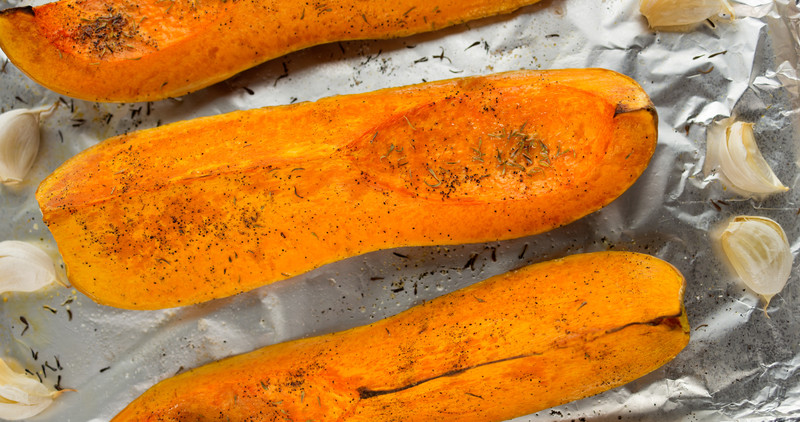
Roasting winter squash
Small winter squashes such as butternut, Delicata, and acorn can be roasted in halves to serve right in the shell.
- Preheat the oven to 400°F.
- Halve the squash and scoop out the seeds. No need to remove the skin.
- Place the halves cut side up on an oiled rimmed-baking sheet or shallow roasting pan, drizzle lightly with olive oil, and sprinkle with salt. Turn the cut side down and roast for about 30 minutes without disturbing.
- Turn the squash over and roast until tender, another 20 minutes or so depending on the variety.
- After turning the squash cut side up, baste the pieces generously with oil or melted butter every 10 or 15 minutes for added moistness and flavor. Baste with (1) olive oil or butter or (2) equal parts oil and orange juice or (3) two parts oil, one part lemon juice, and sugar or honey to taste.
- Add a few dashes of cinnamon, nutmeg, or allspice to the basting mixture if you like.
- The skin will be soft after roasting and just fine to eat.
Unpeeled butternut or Delicata squash, once halved and seeded can be cut into long slices and laid on an oiled baking sheet to roast as well.
Boiling winter squash
Halve or quarter the squash if it is too large to cook whole. Peel and cut into ½-inch-thick slices. In a wide frying pan, boil 1½ to 2 pounds of squash, covered, in ½ inch water until tender when pierced (7 to 9 minutes). Drain.
Butter-steaming winter squash
Halve or quarter the squash if it is too large to cook whole. Peel and cut into 1-inch cubes. Butter-steam up to 5 cups, using 2 tablespoons of butter or margarine. Cook, stirring, for 1 minute. Add 3 to 5 tablespoons liquid, cover, and cook just until squash is tender to bite (6 to 8 minutes).
Microwaving winter squash
Halve or quarter 2 medium-size squash such as acorn or butternut (about 1½ pounds each) or a 1-pound piece of squash such as banana. (Pumpkin is not recommended for microwave.) Place squash, cut side up, in a 9- by 13-inch nonmetallic baking dish. Spread cut surfaces with 1 to 2 tablespoons butter or margarine; cover. Microwave on high (100%) for 10 to 13 minutes, rotating dish ½ turn after 5 minutes. Let stand, covered, for 5 minutes. The flesh should be tender when pierced.
Steaming winter squash
Halve or quarter the squash then peel and cut into ½-inch-thick slices. Arrange on a rack. Steam until tender when pierced (9 to 12 minutes).
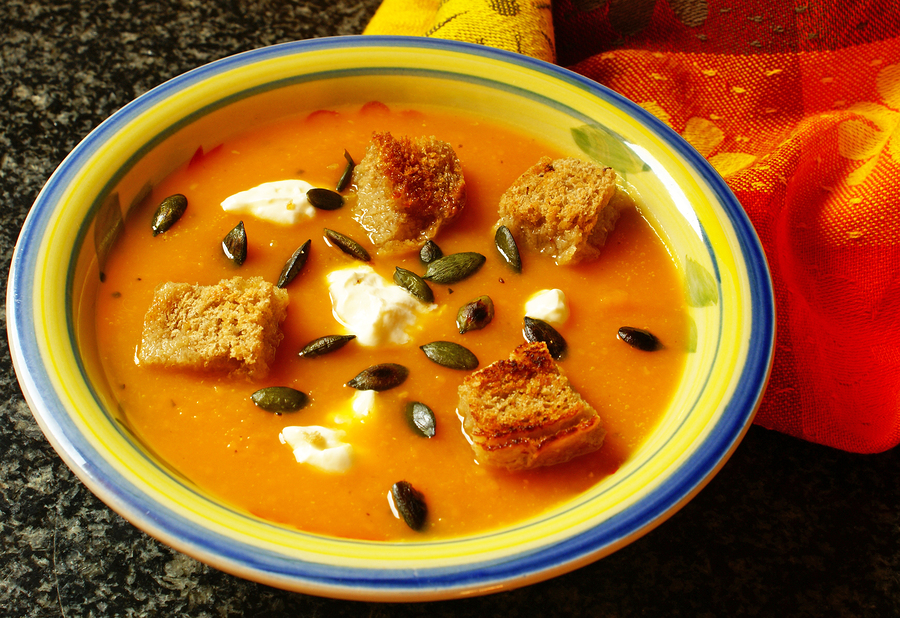
How to make winter squash soup
Gather ingredients
To prepare a delicious and comforting winter squash soup, you will need a few essential ingredients. First and foremost, you will need a variety of winter squash, such as butternut, acorn, or kabocha squash. Make sure to select squash that is firm and vibrant in color, as these will yield the best flavor. Additionally, gather some aromatic vegetables like onions, celery, and carrots to add depth and fragrance to the soup. You will also require a few cloves of garlic, which will lend a rich and savory taste to the dish. For seasoning, gather dried herbs like thyme, rosemary, and bay leaves. Finally, a good-quality vegetable or chicken stock will form the flavorful base of the soup. Don’t forget the finishing touches such as salt, pepper, and a splash of cream to enrich the soup’s velvety texture.
Prepare the squash
Before diving into the cooking process, it is crucial to properly prepare the winter squash. Begin by cutting the squash in half and removing the seeds and stringy pulp from the center. Some people prefer to peel the squash before cooking, but leaving the skin intact can add additional flavor and texture to the soup. After removing the seeds, proceed to cut the squash into smaller, manageable pieces. This will not only help with cooking time but also make it easier to blend the squash into a smooth and silky soup later on.
Cooking
To start the cooking process, heat a large soup pot over medium heat and melt a tablespoon of butter or olive oil. Add the chopped onions, celery, and carrots to the pot, and sauté until they begin to soften and become fragrant. Next, add the minced garlic and cook for another minute or so, allowing the flavors to meld together. Once the vegetables have taken on a rich golden color, add the chopped winter squash to the pot, followed by the dried herbs like thyme, rosemary, and bay leaves. Season with salt and pepper to taste, and stir everything together to coat the squash with the aromatic mixture.
Simmer and blend
Now, it’s time to add the stock to the pot, ensuring that the liquid covers the vegetables and squash completely. Bring the mixture to a boil, then reduce the heat and let it simmer gently for about 20-25 minutes, or until the vegetables and squash are tender. At this point, remove the bay leaves from the pot and use an immersion blender or a regular blender to puree the soup until smooth and velvety. If using a regular blender, be sure to allow the soup to cool slightly before blending, and blend in batches if necessary. Once blended, return the soup to the pot and stir in a splash of cream to add indulgence and further enhance the soup’s rich texture.
Serve
To serve the winter squash soup, ladle it into warm bowls, and garnish with a sprinkle of fresh herbs like chives or parsley. For an extra touch of decadence, a dollop of sour cream or crème fraiche on top will elevate the flavors and bring a creamy tanginess to each spoonful. This soup pairs wonderfully with a crusty loaf of bread or a side of salad for a complete and satisfying meal. Whether enjoyed as a warm lunch or a cozy dinner, this winter squash soup is sure to warm both body and soul during the cold winter months.
Winter squash flavor partners
Winter squash has a flavor affinity for butter, couscous, garlic, honey, lamb, maple syrup, olive oil, pasta, rosemary, sage, savory, and thyme.
Season winter squashes with salt, pepper, onion, garlic, basil, dill, mustard, oregano, thyme, parsley, marjoram, cardamom, ginger, cinnamon, allspice, nutmeg, mace, cloves, coriander, cumin, curry powder, anise, rosemary, or fennel.
Serve winter squashes with seasonings alone or top with plain or flavored butter or margarine, or with white sauce or with honey, molasses, or brown sugar.
Get to know winter squash
- Winter squash is the American name for several varieties of hard-skinned squash of Central and South American origin.
- The word “squash” is derived from the Algonquian word askutasquash.
- Winter squashes belong to the genus Cucurbita. Species include Cucurbita maxima which include the varieties Hubbard, blue and red kuri, and buttercup. Cucurbita moshata includes the varieties butternut, winter crookneck, some pumpkins, and calabaza. Cucurbita pepo includes the varieties acorn, spaghetti, and pumpkin. Cucurbita argyosperma (or mixta) includes the varieties golden striped and green striped cushaw.
- Winter squashes have a hard, inedible peel. Summer squashes are entirely edible.
Related articles:
How to Harvest, Cure, and Store Winter Squash
How to Grow Summer and Winter Squash
Squash articles at Harvest to Table:
How to Grow Summer and Winter Squash
How to Plant and Grow Pumpkins
How to Harvest and Store Summer Squash
How to Harvest, Cure, and Store Winter Squash
How to Harvest and Store Pumpkins
Eight Ways to Cook and Serve Summer Squash
Seven Ways to Cook and Serve Winter Squash
How to Make Creamy Pumpkin Soup
How to Cook and Serve Squash Blossoms
Squash Growing Problems: Troubleshooting
Squash Vine Borer Organic Pest Control
Squash Bug Organic Pest Control
Corn, Beans, and Squash: The Three Sisters
Articles of interest:
Best Herbs for Container Growing
Garden Planning Books at Amazon:
- Vegetable Garden Almanac & Planner
- Kitchen Garden Grower’s Guide Vegetable Encyclopedia
- Vegetable Garden Grower’s Guide
- Tomato Grower’s Answer Book
More kitchen tips:
Bring your harvest to the table. Kitchen prep tips and easy recipes for the vegetables you grow. Click below for vegetable prep and recipes you can use now.
- Almonds
- Apples
- Apricot
- Aprium
- Artichoke
- Arugula
- Asparagus
- Avocado
- Bamboo Shoots
- Banana
- Basil
- Beans, Dried
- Beans. Long
- Beans, Shell
- Beans, Snap
- Beets
- Bitter Melon
- Blackberry
- Bok Choy
- Broccoli
- Broccoli Raab
- Brussels Sprouts
- Cabbage
- Cardoon
- Carrots
- Cauliflower
- Celeriac
- Celery
- Chard
- Chayote Squash
- Cherimoya
- Cherries
- Chestnut
- Chickpea
- Chinese Cabbage
- Chives
- Cilantro
- Citron
- Clementine
- Collards
- Coriander
- Corn, Sweet
- Corn, Baby
- Corn Salad, Mache
- Cranberry
- Cress
- Cucumber
- Daikon
- Dandelion
- Dill
- Eggplant
- Endive, Belgian
- Endive and Escarole
- Fava Beans
- Fig
- Florence Fennel
- Garlic
- Ginger
- Grapefruit
- Grapes
- Guava
- Horseradish
- Jerusalem Artichoke
- Jicama
- Jujube
- Kale
- Kiwifruit
- Kohlrabi
- Kumquat
- Leeks
- Lemongrass
- Lemons
- Lettuce
- Lime
- Mache (Corn Salad)
- Mandarin Orange
- Mango
- Maple Syrup
- Marjoram
- Melons
- Michihili
- Mint
- Mizuna
- Mushrooms
- Mushrooms, Cremini
- Mustard Greens
- Napa Cabbage
- Nectarine
- Okra
- Olives
- Olive oil
- Onions
- Oranges
- Oregano
- Parsley
- Parsley Root
- Parsnips
- Passion Fruit
- Pawpaw
- Peaches
- Pears
- Peas, Garden Snap
- Peas, Snow
- Pei Tsai
- Peppers, Chili
- Peppers, Sweet
- Persimmon
- Pineapple
- Pineapple Guava
- Plantain
- Plums
- Pluots
- Pomegranate
- Potatoes
- Prickly Pear
- Pumpkin
- Quince
- Radicchio
- Radishes
- Raspberries
- Rosemary
- Rhubarb
- Rutabaga
- Sage
- Salsify
- Sauerkraut
- Savory
- Shallots
- Sorrel
- Spinach
- Squash, Summer
- Squash, Winter
- Strawberries
- Sunchokes
- Sunflower
- Sweet Potato
- Swiss Chard
- Tangerine
- Taro
- Tarragon
- Thyme
- Tomatillo
- Tomato
- Turnip
- Turnip Greens
- Yams



